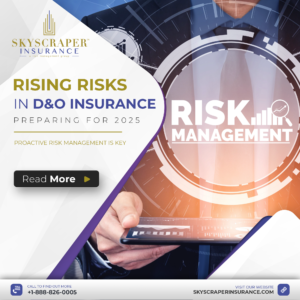Here are some ideas for cultivating employee engagement to ensure your insurance business is operating at its best.
Insurance companies with highly motivated employees that continuously improve always find better ways of delivering value more efficiently to the customer.
Every business has a secret ingredient that can ensure its success. It’s called employee engagement, and it can mean the difference between staff feeling empowered to take your company to new heights or discouraged to the point where they actually sabotage your business.
It’s a secret because many companies don’t appreciate the value of building a culture of trust, open communication and continuous improvement.
Think about this: McKinsey & Company issued a report called “Building a Culture of Continuous Improvement in Insurance.” They found that when insurers had effective improvement programs, they saw increases in efficiency, capacity, productivity and return on equity. Underwriting and claims processing times went down, while customer satisfaction and renewals went up.
A key driver of improvement, McKinsey said, was “enabling people to lead and contribute to their fullest potential.” Makes sense. But insurers, in the race to digital transformation, sometimes forget that it’s their people who got them to the dance — not the latest app or data management tool.
A fundamental part of your culture
Employee engagement should be a starting point, not an add-on or afterthought. At our company, it’s a fundamental part of our culture. We work hard to make our firm a fun, rewarding and productive place to be. We’re never satisfied with just checking the box. We don’t think you can be the best at what you do if you aren’t continually improving your products and customer service.
We’re a program administrator with a staff of 130. That’s small compared to many insurers, but I believe the employee programs we’ve established are transferrable to any company, large or small. Here are some ideas for cultivating employee engagement to make sure you’re operating at your best:
- Manage by walking around. We’re fortunate to have our staff on one floor. This facilitates open and free discussion. I know that when I walk through the office, it may take me up to half an hour to reach my destination. Along the way, I’m having face-to-face conversations with our employees. We have a companywide open-door policy. Any employee can speak to anyone on our management team, regardless of their position.
- Seek input. We constantly ask our teams for feedback. We use anonymous formats, focus groups and one-on-one conversations. We want our staff to feel comfortable making suggestions and to know their ideas are valued. We listen to everyone and encourage collaboration across departments.
- Engage employees through informal and formal programs. In addition to direct interaction, we’ve found it helpful to create several formal programs. These include BREAKING GROUND, a twice-yearly meeting where employees can submit ideas and make comments; Punch List, our monthly virtual meeting when staff can chat-text their comments and questions; and an email suggestion box.
- Be intentional about culture. Our Culture Committee serves as our eyes, ears and boots on the ground to drive culture initiatives forward and promote our values across the organization. But we also have a Brand Culture Touchpoint Team to identify and resolve issues that are impeding success and are at odds with our brand. The team engages with employees to get their input and to form working groups to reduce the frictions that have been identified.
- Build continuous improvement into performance goals. While you certainly want employee engagement to become an organic, self-sustaining part of your culture, you also need to have some accountability. Make sure your employees are living your values. Establish performance goals that promote communication, participation, collaboration, initiative, service and learning.
How do you know if it’s working?
Companies with highly motivated employees that continuously improve always find better ways of delivering value more efficiently to the customer. McKinsey says insurers that “evolve with their customers constantly reassess all levels of their operations… they view problems as unique chances to improve, awarding recognition and career advancement to people who contribute effectively to the problem-solving process.”
At our company, numerous workflow improvements have come from employees empowered to address processes that may be inefficient or no longer necessary. These range from automating our commercial builder’s risk policies to completely streamlining the process for issuing our smaller residential policies.
Since our products are distributed exclusively by agents, encouraging their feedback is an important part of our continuous improvement program. Often feedback is a direct result of conversations agents have with our staff. We know our agents have a choice in the companies they represent, so retention and new business depend on maintaining high agent satisfaction. Putting our agents and their customers’ needs first is everyone’s job at our company.
We’re successful when we all pull on the rope in the same direction. Having a common set of values and a sense of purpose that everyone can embrace is fundamental to who we are and how we conduct business. That means hiring people with the right attitude and not worrying so much about their insurance knowledge — something that can be taught later. It also leads to greater job satisfaction, better productivity and higher employee retention.
Hire good people and then let them do their jobs. You’ve heard that before, but it’s the starting point for improving your company’s efficiency and customer experience. Good employees do more than show up at work; they strive to make their company better. Employee engagement starts with that foundation. If a company has it, it can do amazing things.





